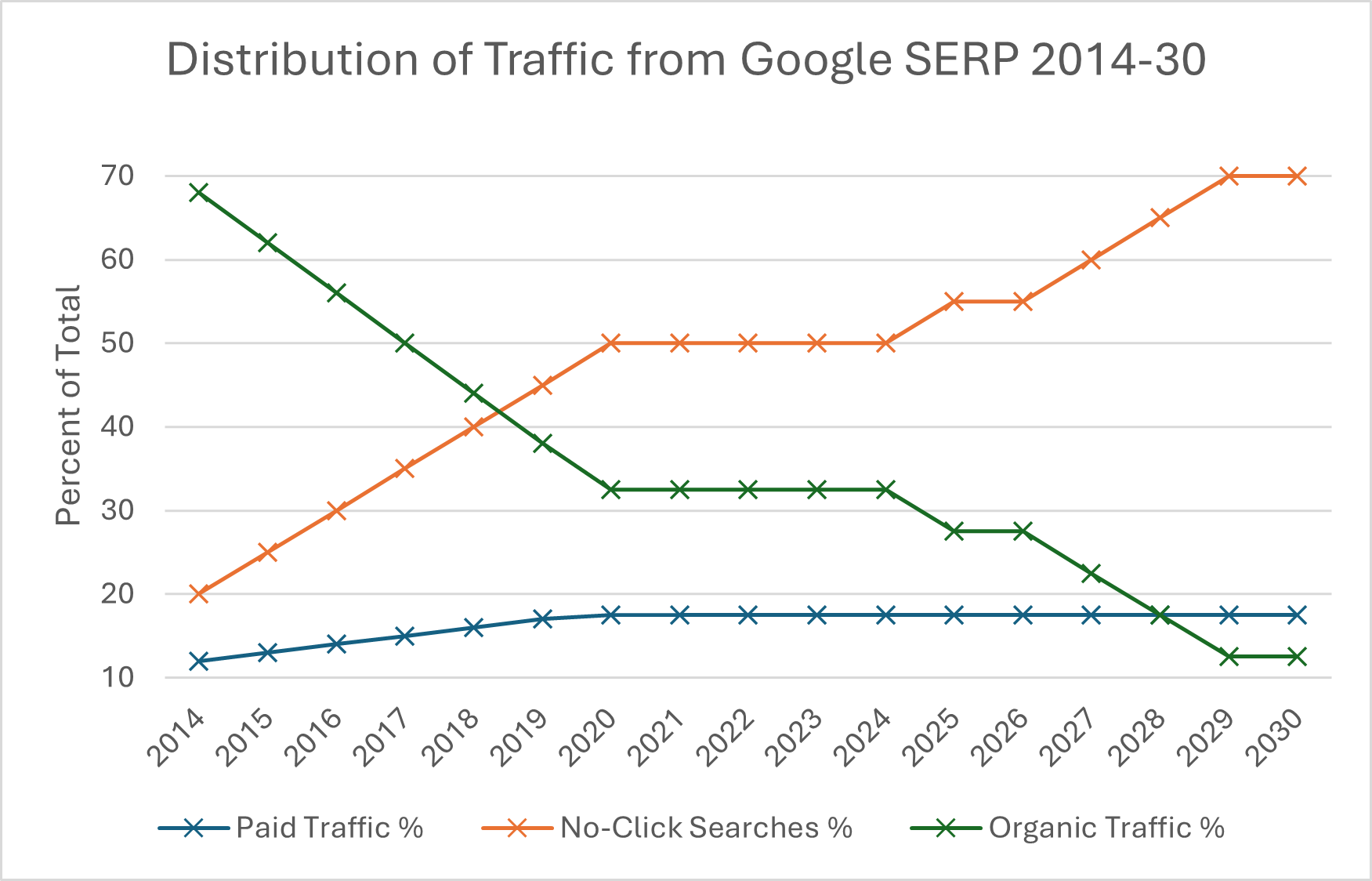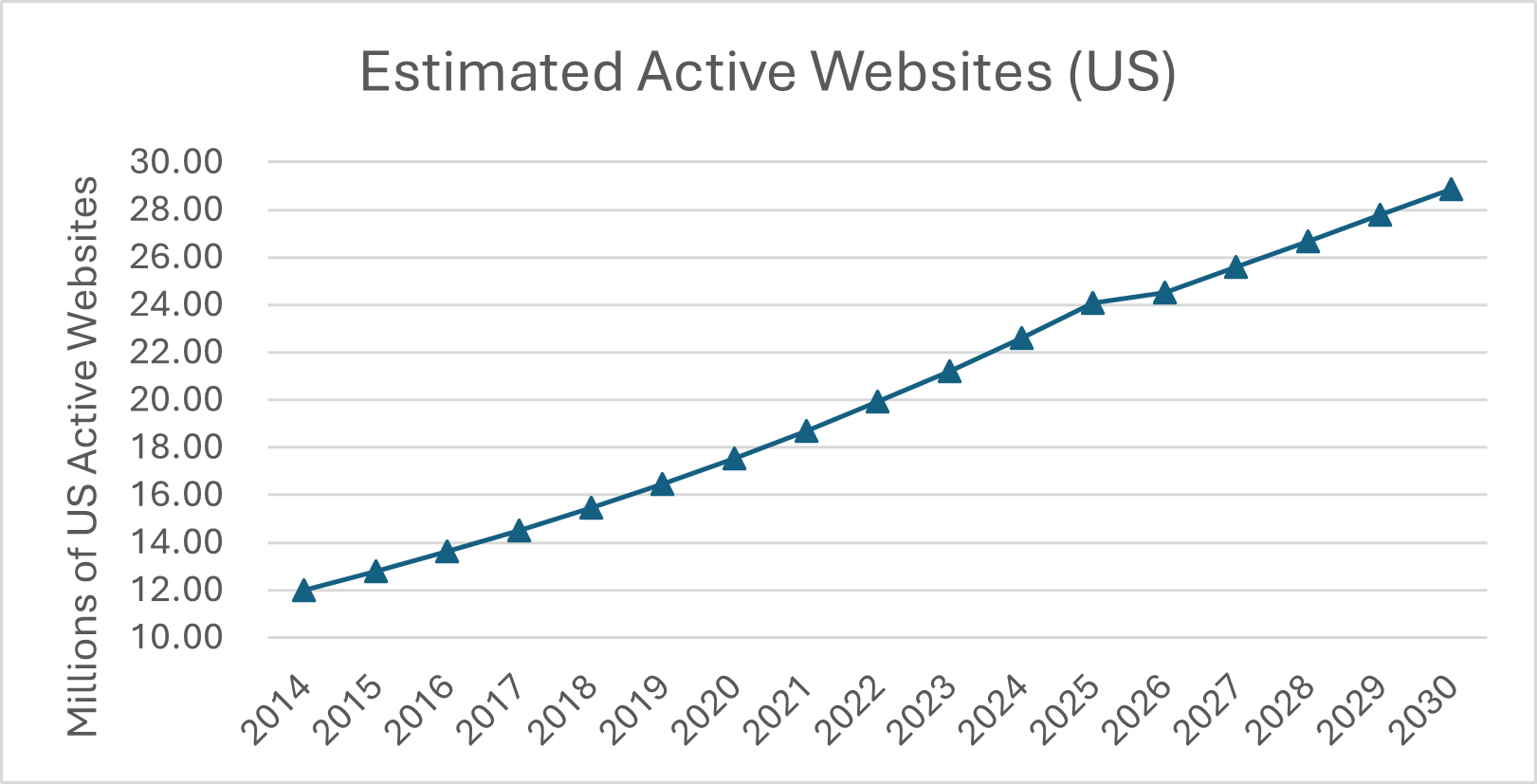/From%20Search%20to%20Ask%20The%20Future%20of%20Online%20Traffic/How%20Googles%20No-Click%20Search%20is%20Reshaping%20Online%20Traffic.jpg)
In a rapidly evolving digital landscape, AI-driven interactions transform how businesses engage with customers. For Dealers, adapting to these changes is no longer optional; it’s essential. This seven-part series outlines a structured approach to building a resilient, future-ready online presence. We explore the challenges of legacy websites, the critical role of high-quality, structured content, and the impact of AI-powered features in enhancing user engagement. By acting now, Dealers can secure a competitive edge, improve visibility, and deliver an unmatched user experience that aligns with current SEO demands and the emerging AI-Ask model.
In today’s digital-first world, small and medium-sized enterprises (SMEs) face a monumental challenge: establishing and sustaining an online presence that can compete with the dominance of powerful online platforms. With every passing day, companies like Amazon, Google, and Facebook tighten their grip on digital visibility, leaving SMEs struggling to secure even a fraction of the attention and engagement that drive business success. The landscape is becoming more unforgiving, and the window of opportunity to act for SMEs is closing quickly.
For most SMEs, day-to-day demands take priority, leaving little time or resources for a strategic approach to online growth. But the stakes have never been higher. With the rapid adoption of artificial intelligence (AI) and the shift from traditional search models to AI-driven “ask” models, we’re now in the midst of a seismic technology shift. The way customers search, engage, and interact online is transforming, and businesses that fail to adapt risk becoming marginalized.
This series of articles is designed to help Dealers understand how these changes are reshaping the online playing field and to explain the need for a powerful, future-proof solution tailored specifically for them. This paper will show that through high-quality, structured content and on-site AI-Ask capabilities, Dealers become empowered to build a resilient, self-sustaining digital ecosystem less dependent on major platforms and more in control of their digital destiny.
Dealers don’t have the luxury of waiting. To remain relevant and accessible, now must be the time to embrace an advanced digital strategy that aligns with the future of online engagement. The content that follows will outline how this transformation can be achieved and why Dealers must act before they’re left behind.
For over two decades, Google has positioned itself as a “friend” to businesses, providing organic traffic to those who optimized their sites according to SEO best practices. This arrangement fostered a model where businesses believed that if they “played by the rules,” they would earn visibility and website visits free of charge. However, beneath this facade, Google’s model has always been a profit-driven machine, built on a “pay-to-play” foundation. The promise of organic traffic has been cleverly balanced to ensure that while some clicks are free, many businesses still rely heavily on paid ads to gain substantial visibility.
The Rise of AI and Its Impact on Traffic Distribution
We’re witnessing a fundamental shift as AI-driven responses reshape the online search landscape. The first step in limiting clicks away from the search engine results page (SERP) came with “snippets,” which provided users with immediate answers directly on the SERP. This change alone has led to a staggering 50% of searches resulting in “no-click,” meaning users found the information they needed within Google’s ecosystem without clicking through to individual websites. Now, with the introduction of AI responses layered on top of snippets, this rate is expected to rise even further, with conservative estimates suggesting that 70% of conventional (legacy) searches may soon result in no click.
What does this mean for businesses? Quite simply, less traffic will be distributed organically. As more users rely on Google’s AI-generated answers, the share of traffic reaching external websites, including Dealers’ sites, will likely drop sharply. While this is advantageous for Google, as it keeps users on their platform, it spells trouble for businesses that rely on organic traffic as a primary source of engagement and leads.

The Legacy Model and Google’s Profit Motive
At its core, Google’s model has always prioritized its revenue through paid ad placements. By balancing organic and paid traffic, Google has cultivated a dependency on their platform, encouraging businesses to believe that good SEO practices would be rewarded with free traffic. However, with the rise of AI-driven “ask” models, the organic traffic “reward” will likely diminish, while the need to pay for visibility will significantly increase.
For Google to maintain its profit model amid these changes, it will likely funnel a higher percentage of the “click” traffic toward paid placements. Businesses—Dealers included—may soon face a stark choice: pay more for visibility through Google’s ads or accept significantly less organic traffic.
The Diminishing Value of Organic Search and the Need for Change
Between 2014 and 2024, the number of active websites in the United States increased by an impressive 88%, yet the overall volume of searches rose by only 67%. This mismatch reveals a stark reality: with a far greater number of sites competing for a relatively smaller increase in search volume, the distribution of organic traffic has become increasingly concentrated and limited.

Even more concerning for businesses heavily invested in SEO, distributed organic traffic has decreased by nearly 60% during this period. Furthermore, organic traffic distribution between 2024 and 30 is expected to decline another 67%, or by 86% over the entire 2014-30 timeframe.
While Google has conditioned many businesses to believe that SEO alone will yield "free" organic traffic by meeting Google’s standards, the data tells a different story. As competition rises and Google’s algorithms prioritize no-click and paid results, the returns on SEO investments have been significantly reduced, forcing businesses to rethink their strategies in this increasingly restrictive landscape.
The traditional SEO model was built on the assumption that organic search traffic would remain a constant and valuable asset for businesses. However, as the dynamics shift, relying solely on Google’s platform for traffic will become increasingly unsustainable. With fewer organic opportunities and rising ad costs, Dealers urgently need to diversify their digital strategies and reduce their dependency on Google.
To overcome this dramatic reduction in distributed organic traffic from the Google platform, SMEs must adopt a locally controlled, AI-driven “ask” model to capture and retain user engagement directly on their websites. This will improve user experience and help establish a self-sustaining online presence that doesn’t rely on Google’s evolving and increasingly costly model.
Related Reading:
Building an AI-Optimized Website: Key Components: As AI-driven models reshape how users interact with content, dealers must invest in structured content now to enhance SEO performance and future-proof their websites.